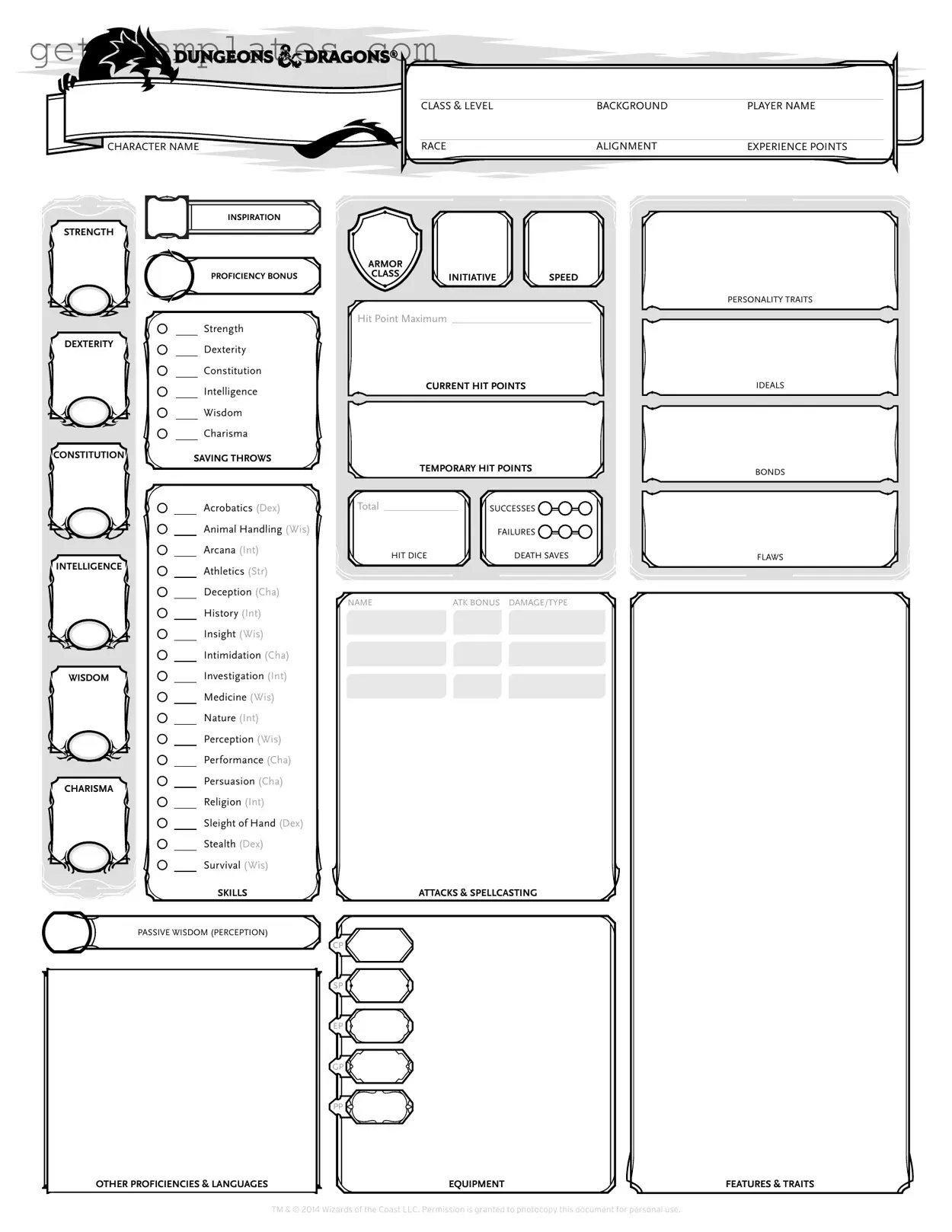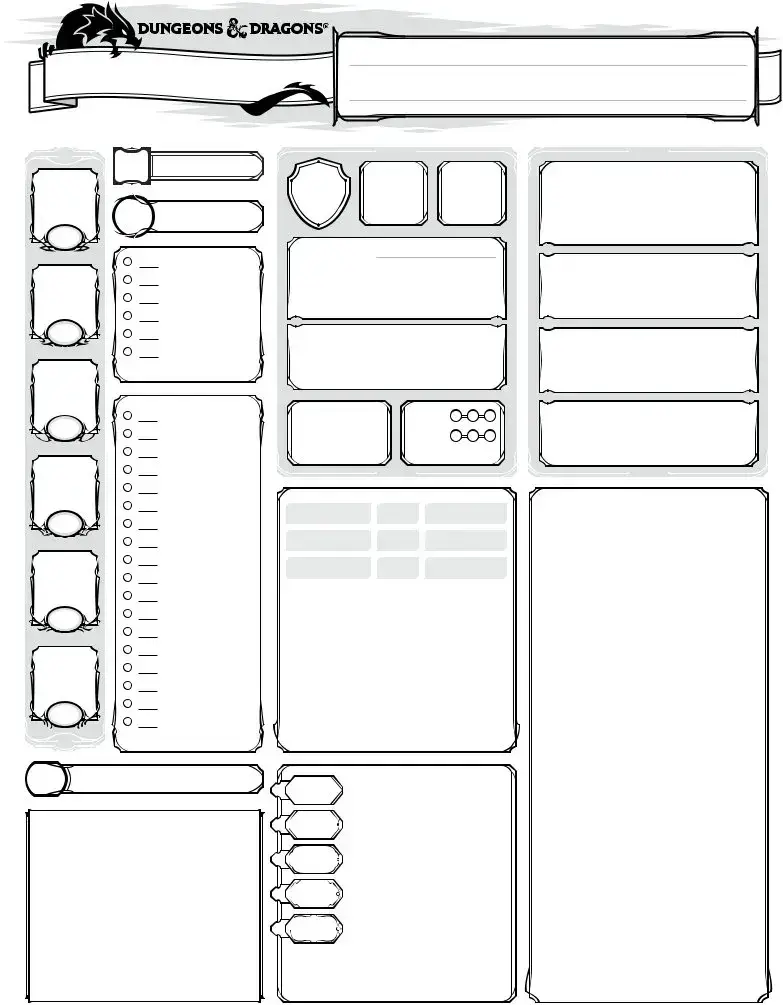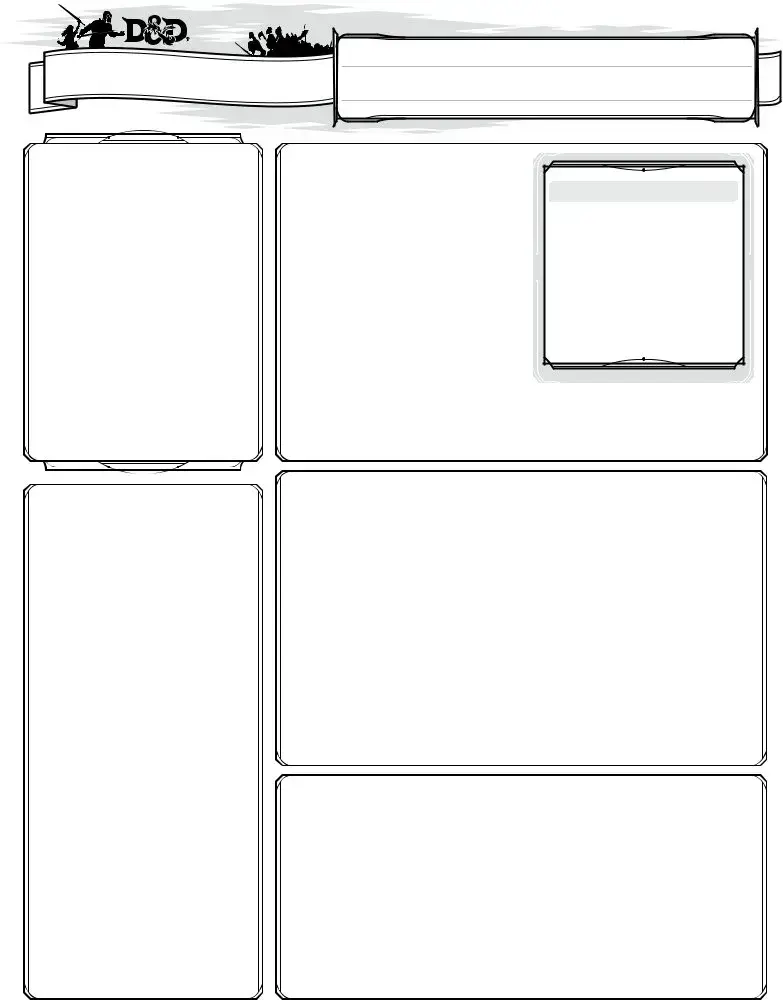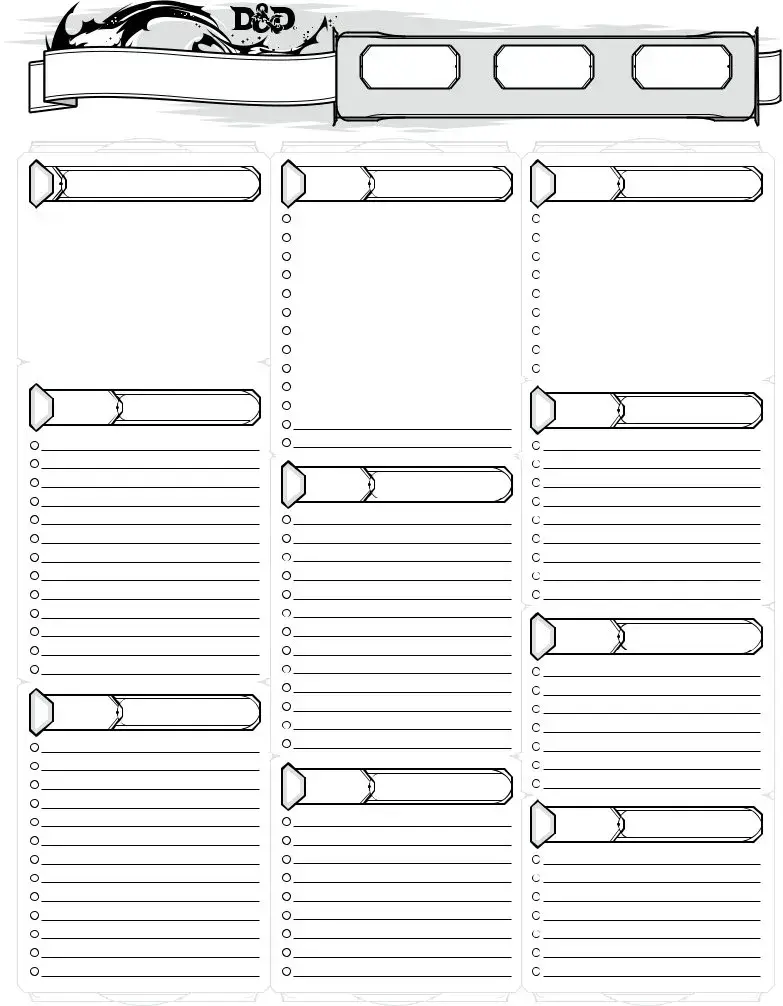Fill in a Valid Dnd Character Sheet Template
The Dungeons & Dragons (D&D) Character Sheet is a crucial tool for players, serving as a comprehensive record of a character's abilities, skills, and background. This form not only organizes essential information but also enhances the gameplay experience by allowing players to track their character's development throughout the campaign. Understanding how to effectively use the character sheet can significantly impact a player's engagement and strategy in the game.
Get Document Online













